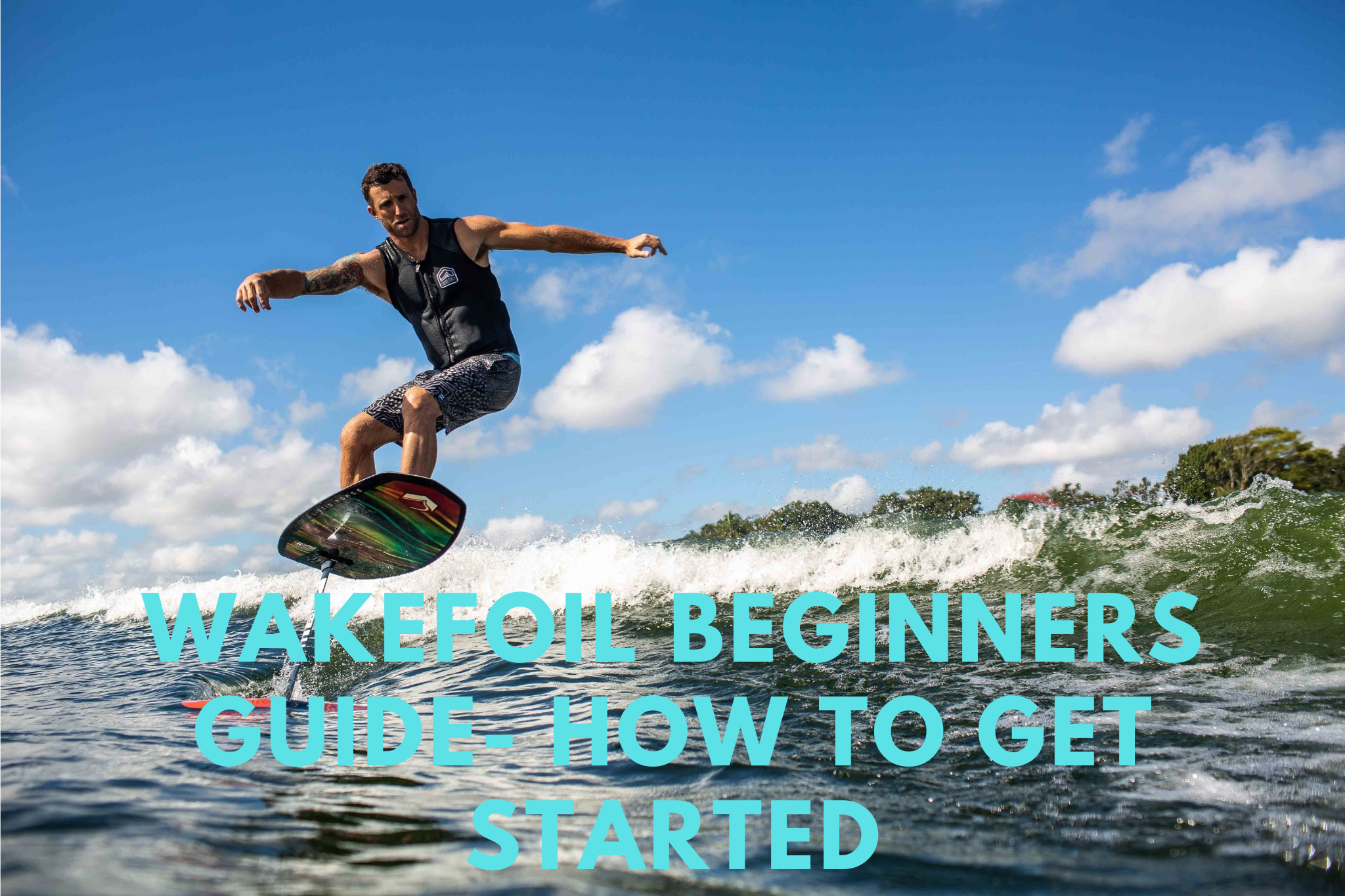
Wakefoiling is a new sport that is taking over lakes! But what is Wakefoiling and how do you get started?
Wakefoiling was invented in the sixties when aeronautical engineer Bob Woodward came up with hydrofoil water skis in order to eliminate drag and glide over the water with more smoothness and speed. Surf pioneers like Laird Hamilton then took this concept to surfing and other prodigies like Kai Lenny have continued to explore it and fine tune it. Up there with the most interesting iterations of the sport has been the marriage of foiling and wakeboarding.
A foil equipped board expands your freedom to ride just about anywhere a wave or lift can occur in the water, whether that’s directly behind the boat or three waves back. The new board system utilizes a foil that planes underwater and attaches to a traditional wakesurf board via a mast for a riding experience unlike anything else.This also means that you don’t need a fancy boat to get cruising – literally any watercraft can be enough to get you going. Though there is a bit of a learning curve, wakefoiling does not require much speed once mastered. Skilled riders can even keep riding well after they have left the wake.

Choosing a Board-
Board Length- One of the first things you’ll need to learn when you begin foiling is how to control the height of your hydrofoil rig on the water. When you practice this, your board will go back and forth from planing on the water to hovering above the surface. This stage isn’t always graceful and can cause your board’s nose to dive towards the surface of the water. A longer board will have more surface area in front of your front foot and will aid in keeping the foilboard from diving under the water and ending your ride. It won’t be easy to recover with a shorter board and will stop or lengthen your progression.
Swing Weight- Why wouldn’t everyone want to have a longer board all the time? We have experienced riders that are wake foiling with boards as short as 3’6. As your board increases in length, the “Swing Weight” will increase as well. Swing weight is the force it takes to change directions quickly and affects your board’s reaction speed when carving. Shorter board are quick and agile, while longer boards are slower to react when you initiate a turn.
Board Thickness- Most people we see learning to Wakefoil behind the boat start using a somewhat traditional wakesurf start (with different foot pressure). The rider is in the water, and the board is floating on edge in front of them. Thicker boards sit higher out of the water because of their volume than a thin board in this position. The boat is pulling the foiler up on top of the board. The thicker, higher volume board will be sitting higher, so it will take more force and balance to pull the rider up on top of it. The thinner board sits lower in the water, making getting up on top of it more manageable.

How to Wakefoil-
If you’re a complete beginner, you want to–
- 1. Place your feet flat on the board and get the foil to be as close to the surface of the water as possible.
- 2. Get whoever is driving the boat to start slow (7 to 10 mph, more or less) and ease you into a slightly faster speed.
- 3. Position your feet forward on the board so that the foil is directly below you, bend your knees and keep your butt down, and when you’re comfortable, start to move your stance further back so that the foil begins to act like an airplane, propelling your board out of the water.
- 4. Once you’re up, think of the mast as the control stick of your vessel and use it to play with your roll, pitch, skip and skid.

If you’re an experienced rider-
- 1. Waking with a rope is much easier because since the foil eliminates so much of the drag, your arms are making a significantly smaller effort and you can go on for a lot longer.
- 2. Once you’ve settled into the groove you’ll be ready to let go of the rope and surf the wake using your own body weight.
- 3. At this point, the most important thing you want to bear in mind is the gear you choose, since this will be considerably different depending on what your goal is.
Wakefoiling is the new craze for lakefront homeowners. You don’t want to miss out on all the fun so be sure to do some research finding a board that works for you and your level before next summer and enjoy!
Posted by Scott Freerksen “The Lake Guy”
